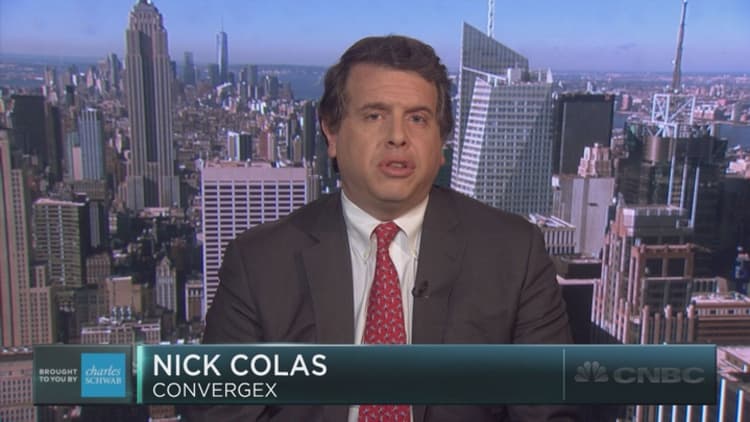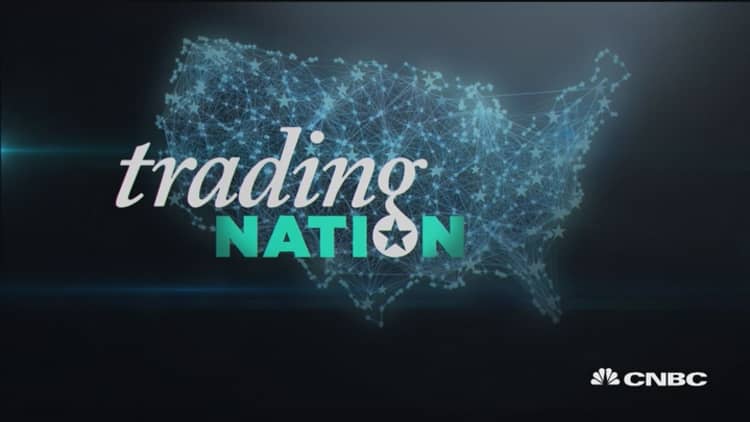


If the days of "buying the dips" are over, it's only because investors should be waiting for something much, much bigger, according to one strategist.
In volatile markets, buying the dip is an investing strategy to purchase stocks at a discount when they fall, betting that prices will rise again. However, Nick Colas of Convergex said a much more fitting approach is to "buy the crater," on days when the falls by 5 percent or more.
"Those are days when you get a real buying opportunity on the close," Colas said Monday on CNBC's "Trading Nation." "The 5 percent drop yielded something we can noticeably say is outside the normal return of the market."
Earlier this year, JPMorgan strategist Mislav Matejka declared an end to seven years of "buying the dip" as he turned bearish on stocks.
Read MoreBuy the dips? No, sell the rallies: JPM strategist
"We were positive on equities for quite a long time," Matejka said in a January "Trading Nation" interview. "But we think structurally, this regime is coming to an end, and the regime that we should be having now is one of selling any rallies."
Colas found an extreme exception.
According to Colas, buying stocks when the S&P 500 closes down more than 5 percent in a session has yielded 19 percent returns on average over one year and 75 percent returns on average over five years. In comparison, buying a 2.5 percent dip saw negative one-year returns more often, and yielded 7 percent on average, Colas said.
Those looking specifically for a 5 percent drop in the market may be waiting for a long time. The last time the market saw a decline of such magnitude was in August 2011. The closest the S&P has come this year is a loss of 2.5 percent on Jan. 13.
Nonetheless, Colas said the market is due for another notable one-day pullback. Factors such as rising interest rates, slow global growth, low commodities prices and a strong U.S. dollar should continue to shake up markets, he said.
"The market may face enough risk and uncertainty for unusual, but not unprecedented moves to the downside," Colas wrote in a note Monday. "We would maintain enough cash to take advantage of greater corrections than seen thus far this year."
Want to be a part of the Trading Nation? If you'd like to call into our live Wednesday show, email your name, number, and a question to TradingNation@cnbc.com





